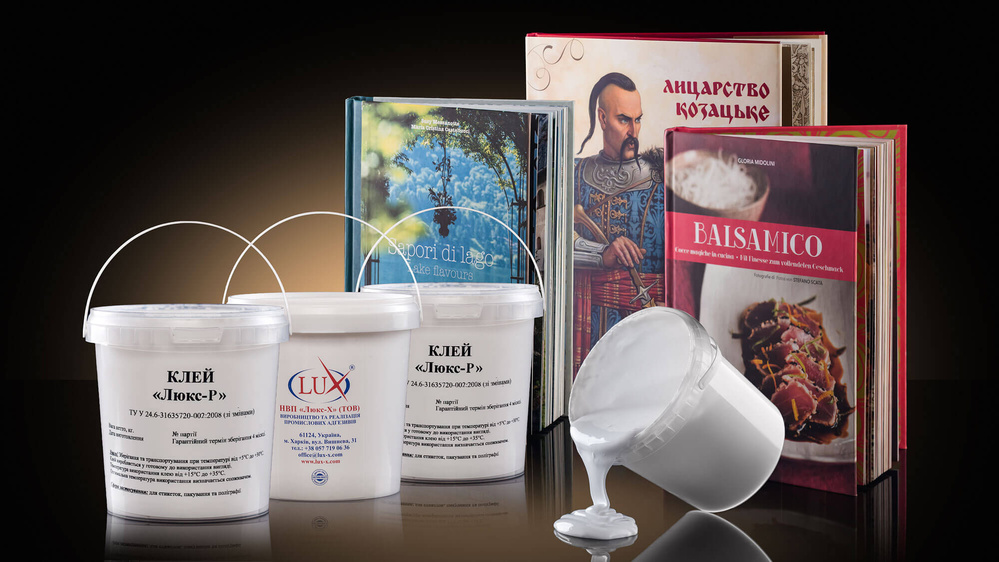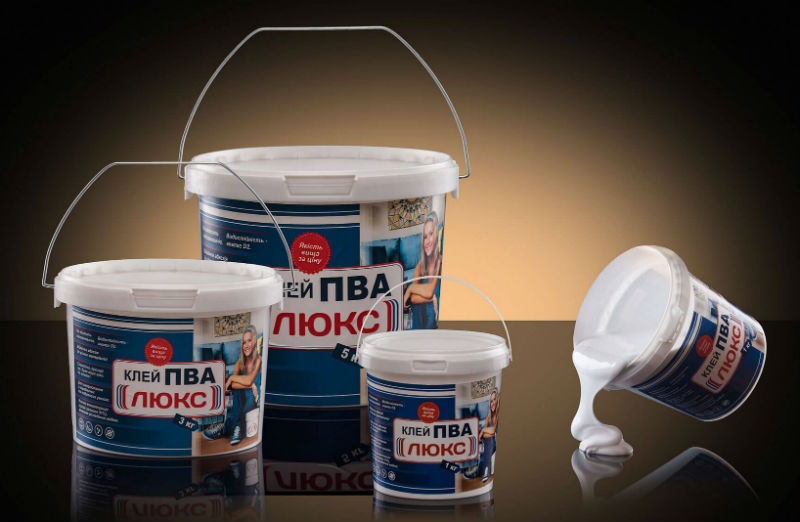PVAcglue's drying rate for various surfaces
- Drying and curing of glue
- PVAcglue's drying rate for wood and furniture
- The more glue is applied to the wooden part, the longer it’s drying time.
- In most cases, PVAc glue dries completely within 24 hours
- PVAc glue's drying rate for paper
- How to reduce the glue's drying time on paper and cardboard in the production environment?
- How to reduce the drying time of the glue for paper and cardboard at home?
- PVACc glue's drying rate for the fabric.
- PVAc glue's drying rate for PVC.
One may wonder, what is the drying time of PVAc glue? The drying time hinges on the quality of glue and the materials the product is made of. This article will be helpful in finding out the drying time of PVAc glue on various surfaces.
Drying and curing of glue
In the technical descriptions or on the glue's label, PVAc manufacturers provide explicit recommendations regarding the glue's drying rate and the polymerization time of a glue line. To achieve the best possible quality of gluing, one should follow the manufacturer's instructions.
The concepts of "drying" and "curing" have different meanings. The term "drying" implies that the surface of the product is dry, the glue line is firm, but not yet firm enough due to the fact that its polymerization has occurred partially and the chemical reaction is still underway. The complete polymerization of the glue line is called "curing time".
Only after the final PVAc curing, one may transport and use the products safely.

PVAcglue's drying rate for wood and furniture
In order for wooden furniture to last a long time, it should be used only after the final polymerization of the adhesive. For this purpose, it is important to know how long the glue will be drying on wooden surfaces.
PVAc glue is made of polyvinyl acetate dispersion. It is versatile, easy to use and good for manufacturing any wooden furniture. The initial setting time of the adhesive is about 30 minutes. Full adhesion occurs in 24 hours.
The drying rate of PVAcis affected by the moisture content in the wood, humidity and ambient temperature.
- Joiner's glue is perfect for gluing wooden surfaces, with its drying rate depending on the bonding conditions and ambient temperature. PVAc glue consists of water, polymers and additives. Water freezes being exposed to low temperatures. Therefore, the glue storage temperature should be at least +5˚С, and the glue aplication temperature should be not lower than +15 ˚С. The colder the room, the longer will be the PVAc's drying time. In cold environments, the adhesion quality deteriorates and the glue stops doing its job.
- Extra ventilation will help facilitate the glue's drying, especially if the wood is not completely dry or there is high humidity in the production room.
- Joiner's glue's drying rate depends on the type of wood. PVAc perfectly glues all types of wood, but if the wood workpieces are coniferous, then they have a soft structure into which the glue penetrates too quickly, so the adhesion rate decreases. When working with coniferous wood, one should remove the clumps that hold the parts together earlier than when bonding the parts made of hardwood.
- Deciduous wood is a hard wood that grows slowly and has a dense structure into which the glue penetrates much longer, so it's drying rate is higher. Before the final processing, it is necessary to achieve complete curing of the PVAc glue.
The more glue is applied to the wooden part, the longer it’s drying time.
There is an opinion that if ones applies a large amount of PVAc glue to the wood, the glue will bond the part more firmly. This is not exactly the case! Here are a number of reasons why one should not apply an excessive amount of glue:
- The drying rate of the glue depends on its amount on the product. An adhesive film is formed between the wood parts, which looks dry, but inside the thick adhesive layer there is a glue layer that has not yet completely dried up.
- When gluing soft coniferous wood, joiner's glue gets too absorbed, which causes the wood fibers to swell and push the surfaces apart, thus reducing the adhesion.
- Before applying paint or varnish to the wood, the remnants of glue should first be sanded and scraped off. If the glue is absorbed into the area around the joint, it prevents the smooth application of decorative coating or gluing of the finish, changing its colour, so, the work will eventually look heterogeneous.
One should follow the recommendations of manufacturers regarding the correct application of PVAc glue for wood. In any case, we recommend applying a thin layer of glue to the two parts of the surface to be glued. If the glue shows up on the cut of the product when compressed, wipe it immediately with a damp cloth.

In most cases, PVAc glue dries completely within 24 hours
Despite the fact that PVAc glue for wood is being made by various manufacturers all over the world and it has many modifications and brands, any PVAc glue normally dries up in 24 hours.
It is not recommended to leave the parts clamped under pressure for too long, since the clamps provide excessive pressure, and the wood may warp. The best option is to slightly unscrew the clamps after the initial applying of the glue and remove them after the glue is completely dry.
One should consider the loads that the product is going to have in the future. For example, if a wooden chair will be regularly subjected to significant load, we recommend that the glued parts be clamped for the maximum possible time. If you need to glue a section of veneer, then after applying the PVAc glue, keep it fixed with a duct tape for one or two hours.
PVAc glue's drying rate for paper
PVAc glue's drying time on paper depends on PVAc composition, the ambient temperature, the humidity in the room, and the amount of glue applied. The thinner the glue layer, the warmer and drier the environment, the faster it dries. It is possible to reduce the drying time of PVAc glue on paper or cardboard by changing the environmental conditions.
How to reduce the glue's drying time on paper and cardboard in the production environment?
- One should opt for the glue with a fast setting time.
- Apply glue in a room with the ambient temperature being at least +15 ˚С.
- Before use, it is necessary to preheat the adhesive to reach the operating temperature in accordance with the technical specifications.
- Mind that the adhesive layer should be as thin as possible.
- Arrange some extra blowing or drying to speed up the drying time of the glue.
How to reduce the drying time of the glue for paper and cardboard at home?
- Apply PVAc glue with a roller or a brush in a thin layer on a paper or cardboard surface, then glue it to another part.
- To fix it more tightly, one may temporarily put the parts under the press or press them with his hands.
- In the warm and dry environment, the paper or cardboard product will be dry in 20-30 minutes. To reduce the drying time, place the fan near the glued parts for 10 minutes.
- How to check whether the surfaces are glued together well? The surface of the paper should be dry on both sides, and the glue line should be transparent and elastic. If the product is still wet, it should be kept under appropriate conditions for a little more time before it is dried completely.

PVACc glue's drying rate for the fabric.
PVAC glue is polyvinyl acetate dissolved in water. PVAc for fabric is a versatile adhesive for your creative projects. It is perfect for bonding porous materials, it does not emit strong odours or vapours, and is safe to touch with bare hands.
Under regular conditions, at an average room temperature, the PVAc glue for the fabric will dry in 20-30 minutes to be ready for further handling. But if the room is cool, the drying process can take about an hour.
PVAc glue's drying rate for PVC.
Is PVAc glue good for plastic? PVAc glue, that is polyvinyl acetate or PVAc dispersion, has strong adhesive properties when gluing wooden, paper, cardboard or fabric parts. PVAc glue's drying rate for these materials has already been highlighted in detail in this article. However, polyvinyl acetate does not provide adhesion when gluing non-porous surfaces such as plastic and metal.
Types of PVAc adhesives and their drying characteristics
Depending on the purpose, you may choose from several varieties of PVAc we will briefly describe in the table below.
|
Type of PVAc |
Description |
Drying time |
|
Construction |
This adhesive is applied in finishing and construction work. It can be used as a sealant for plastering and priming. For this purpose, dilute the PVAc half-and-half with water. Besides, it may be added to concrete, putty, plaster solutions to improve their water resistance and durability. Construction PVAc is also used in mounting of various finishing materials, such as MDF, plywood, and so on. The adhesive demonstrates high durability, resistance to moisture, mechanical and chemical influences. |
Construction PVAc has a longer drying time than common office PVAc, but its complete drying-up time normally takes up 24 hours. |
|
Office |
It is one of the most common types of PVAc adhesives, which is widely used in everyday life, by children at school, etc. It is completely safe, as it does not contain toxic components, and its contact with skin will not cause allergies. Office PVAc glue may be produced in liquid form or as a glue stick – more handy option to be used by kids, since it has a solid form and keeps them clean during their activities. |
The initial setting takes place within a few minutes, and it takes half an hour or an hour for it to dry up completely. |
|
Fabric |
PVAc for fabric is a viscous white-coloured liquid, but nevertheless it forms a transparent adhesive line after drying to keep the good look of the material. Given that it is waterproof, the fabric glued with PVAc can be machine washed. This eco-friendly adhesive is intended for gluing textile materials. |
PVAc for fabric dries up in about half an hour, but if it is too cold in the room, the time may double. |
How to accelerate the drying-up time of PVAc adhesive?
In order for the polyvinyl acetate adhesive to dry faster, it is necessary to provide optimal environmental conditions. Humidity should not exceed 60%, with the room temperature maintained within the range of +15℃...+30℃. Besides, the surfaces to be bonded must be dry, clean and free of grease. To speed up the drying process, you can use:
- The lower the humidity, the faster the water will evaporate, so the adhesive will need shorter time to dry up.
- Good ventilation. Make sure that there is a proper air exchange in the room, as this also has a positive effect on the drying rate.
- Turn it on and direct the flow onto the surfaces to be bonded for about 10 minutes.
- Additional heat sources. Direct a flow of warm air from the dryer to the treated surfaces.
Besides, you should be careful with the amount of adhesive you apply. If you apply too much adhesive, the drying time will increase significantly.
How to make sure that the PVAc adhesive is completely dry?
First of all, there are some external signs indicating that the adhesive has completely dried up, such as the adhesive line becoming transparent and hardened. Apart from that, you will see that the bonding is strong, and you cannot tear the parts apart, even with considerable effort. The surface treated with adhesive will not be sticky to the touch.

Mistakes when using PVAc adhesive that slow down the drying process
- The adhesive's improper storage conditions. To ensure that the adhesive does not lose its original properties, store it in a tightly sealed container in a cool and dry room. Too high level of humidity in the room may also affect the drying time. Besides, if you happen to leave a crack in the lid of the container, a crust may appear on the adhesive's surface. This being the case, remove the crust and stir the adhesive up properly. Be sure to check the expiration date, as expired adhesive may lose its original properties, consequently, it will be drying up longer and fail to guarantee reliable results. Normally, the shelf life of an adhesive is about a year from the date of manufacture, but be sure to read the information on the label first.
- The layer is too thick. Do not think that the thicker layer will provide better result. This is not the case, as a large amount of adhesive will take much longer to dry up than the thin layer applied.
- You do not press it down. In order for the adhesive to show good performance, the surfaces to be bonded must be pressed down together, and you should put some heavy weight on top or put them under the press, for this will accelerate drying process and make the bonding more durable.
For further information or to buy our high-quality Lux PVAc glue for wood, furniture, paper, cardboard or fabric, please send us your request from the website lux-x.com by ordering a callback. Also, you may write an email to office@lux-x.com or call our hotline: +38 (068) 766 06 36; +38 (050) 324 06 36.
Frequently Asked Questions
How long does it take for the PVAc to dry up when applied on the wooden surface?
Half an hour is enough for initial setting, but complete drying-up takes a day.
How long does it take for the PVAc to dry up when applied on the fabric?
Normally, it takes 30-60 minutes, depending on the room temperature.
How long does it take for the PVAc to dry up when applied on paper and cardboard?
It takes about 20-30 minutes.
How long does it take for the PVAc to dry up when applied on the chipboard?
If you are going to glue another porous material onto the chipboard, such as linoleum or carpet flooring, the drying rate will be the same as for wood.






